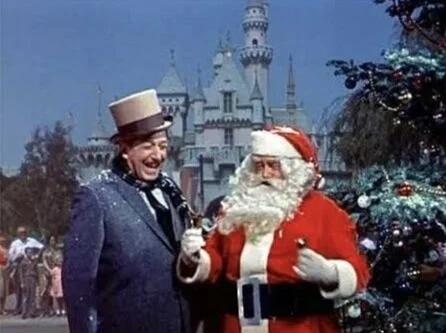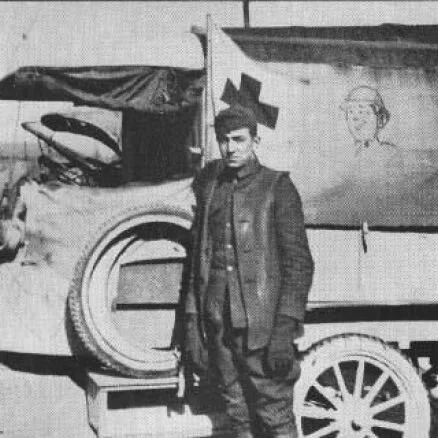Walt Disney - The First Vault Films
“The short subject was just a filler on any program. So I just felt I had to diversify my business and get into these other things that would give me a better chance. Now if I could crack the feature-length field, that would give me sort of an unlimited field. I could do things. ”
Whether you're a Disney fan or not, it's a little hard to ignore all of the feature-length films they have put out over the last 80+ years. There's just no getting away from them.
In part 2 "Walt Disney - Early Companies & Early Films", we talked about Walt's first studio, how he met Ub Iwerks and Lillian Bounds, his first really successful series, and where our beloved Mickey comes from. After creating Mickey Mouse the film series beginning in 1928 and ending in 1953, Walt wanted to do more with his career than just having a television series. He wanted to make it to the big screen - and knew exactly what film to start with.
Snow White, 1938
In 1916 Kansas City, Walt had watched a live action version of Snow White starring Marguerite Clark. Snow White follows the basic plot of any good romance story, and so he felt that it was a great fit to be his first film. He thought it was the "perfect story" and "perfect plot" because it included emotional scenes, comedic scenes, and had romance in it. Walt's wife Lillian was hesitant, as it was a big undertaking and could go very right or very wrong. But, she supported him all the way through, and it ended up paying off anyway.
This was one of Walt's most difficult projects of his whole career, as there was a lot on the line. One of the hardest parts for him and his animators were getting the Seven Dwarfs just right. They really had to pull personality traits and facial expressions from real life, as they were working with 7 of the exact same looking characters that all had to be different from each other. He ended up going the route that we all know now, as the dwarfs were named after their personalities. Bashful, Sleepy, and Happy were the easy ones - they did exactly as their name said. With Doc, Walt wanted to have one of them act as their leader, and Doc sounded like a good fit for that kind of character. With Dopey, they followed the same formula as the others, but he wasn't going to be mute at first. Disney simply couldn't find someone to be Dopey's voice actor, so they decided that he just wouldn't talk; it would make him stand out from the rest.
original models of the dwarves, 1938
When Snow White hit the big screen, the reaction of audiences all around the world was enough for Walt to immediately know he wanted to keep making films. The Disney Studios were able to wipe away all of the debt they had been in while making the film in just 6 months. Snow White was the beginning of something magical.
With Walt's new financial situation, he didn't have to worry about loans or debts. Now he was free to create whatever he desired. The first thing he did was move him and his animators out of their current studio and move to a much nicer studio in Burbank. Now, they could focus on his next big ideas, one of which was Pinocchio.
Pinocchio, 1940
Walt was enamored with the idea of a little puppet wanting to become a real boy. He knew that he wanted this type of story to be his next film, one that had a little more imagination in it.
Pinocchio took just over 2 years to create, with 750 artists working on each frame. This was a whole new hurdle to jump over since this story includes so much imagination and make-believe plots and characters. One of the big things the animators struggled with was figuring out how to animate things to look like they're underwater. Once they figured out a formula for it, they reused these techniques for films like The Little Mermaid.
Just like he used a human model for Snow White to make his animation as real as possible, he used models of Pinocchio, the whale, and more to study the movements. Even the animators used mirrors at their desks to study their own facial expressions for the characters they were working on.
Image from: https://www.youtube.com/watch?v=VEZgW-uurBs
Unlike like Snow White, Pinocchio was not as successful in the box office. But, "When You Wish Upon A Star" has become a staple Disney song even today.
Fantasia, 1940
Only a few months after Pinocchio was released, Fantasia was released from the Walt Disney Animation Studios and starred our favorite character again, Mickey Mouse.
Before it was called Fantasia, the studio named it "The Sorcerer's Apprentice", and was only supposed to be a short film introducing the newly designed Mickey to the world. It was supposed to be a celebration of Mickey, but Walt later formed it into an actual film titled 'Fantasia" instead. Fantasia acted as a new inspiration to the studio, following a different formula from the first 2 movies. It used photographic effects for it's grand imagery that it included. The Philadelphia Orchestra recorded the songs and sounds for this film, and they introduced us to Fantasound. Walt really wanted to have his audience surrounded by music, excitement, drama, and more with this film starring his pal. It didn't end up doing as well as he had hoped, but Disney today still includes sorcerer Mickey in a show in Disneyland titled Fantasmic! to pay homage to it.
“Now, the full expression that comes from the new Fantasound opens up a whole new world for us. The music inspired the pictures.”
Dumbo, 1941
Despite the box office failure that Fantasia was, Disney didn't want to give up on his full-length feature dreams. Instead of going all in on an idea and just hoping it would turn out well, he scaled it back a bit and went for a less ambitious project. Dumbo was the perfect introduction to this new era for the studio, as it reverted back to the same formulas they used for Snow White and Pinocchio; it was heartfelt, and made the audience feel something more. Dumbo had a significantly smaller budget to work with so it's run time was just over an hour. Although it was shorter and less grand, it did well in the box office and Disney was back up and running. However, because of it's short length, it wasn't considered to be a full-length feature film; so Dumbo couldn't reach it's full potential with sales and awards. It was a positive and a negative experience for the studio, but now they were getting a hang of the balance they needed to be successful.
Bambi, 1942
The Walt Disney Animation Studios were pumping out films every year, and each one followed suit to the last. Although Bambi was released in 1942 being the 5th film from Disney, it was actually planned to be the 2nd film, right after Snow White. There were technical issues with the animation for it, so it was delayed, as Pinocchio took its place.
Bambi was based on a book by Felix Salten. Walt loved the original story and thought it would be a good fit for his style, but after closely studying it to begin production, he realized there were a lot of parts that didn't fit his vision for his studio. He ended up changing the story until it was right for him, and once they began animating it, he fell in love with it all over again.
“I loved it, it was one of his best. I loved Fantasia and Bambi.”
Walt's first 5 films marked a major turn around for his studio, his artists, animation, films, stories, and the world of entertainment. He went onto make 8 other films in the 1940s, including "The Three Cabelleros", "Melody Time", and "The Adventures of Ichabod and Mr.Toad". These films aren't widely known and didn't have the same successes as the first 5. This was largely because the 1940s was when the Disney strike happened, as well as World War II, which I'll get into in part 4.
The Walt Disney Animation Studios picked itself back up off the ground after a dark time and dusted itself off, and released Cinderella, Alice in Wonderland, Peter Pan, Lady and the Tramp, and Sleeping Beauty in the 1950s. This began a new era for Disney that we all know and love. Although they were able to ignite their company again, it's important to remember the dark times the studio went through, so stay tuned for "Walt Disney - During the Wars and Strikes" soon.
**credit for info and some pictures go to the Walt Disney Family Museum












